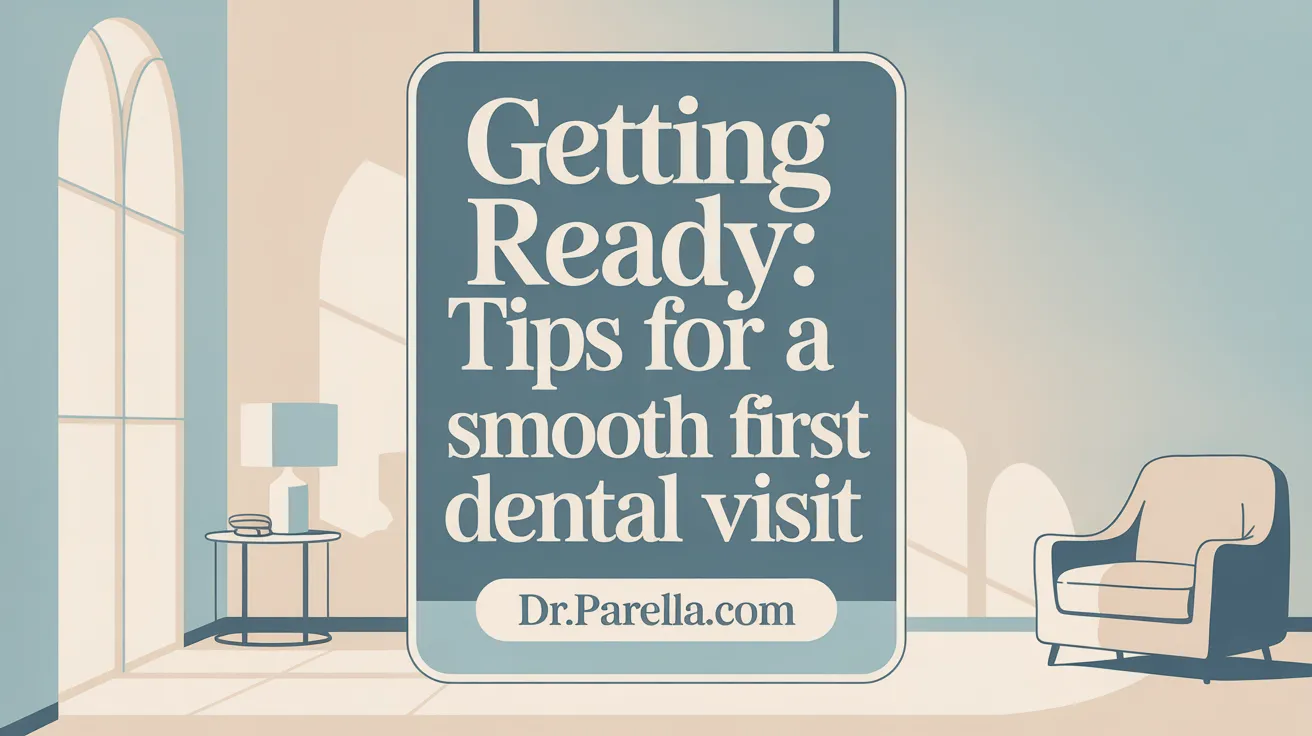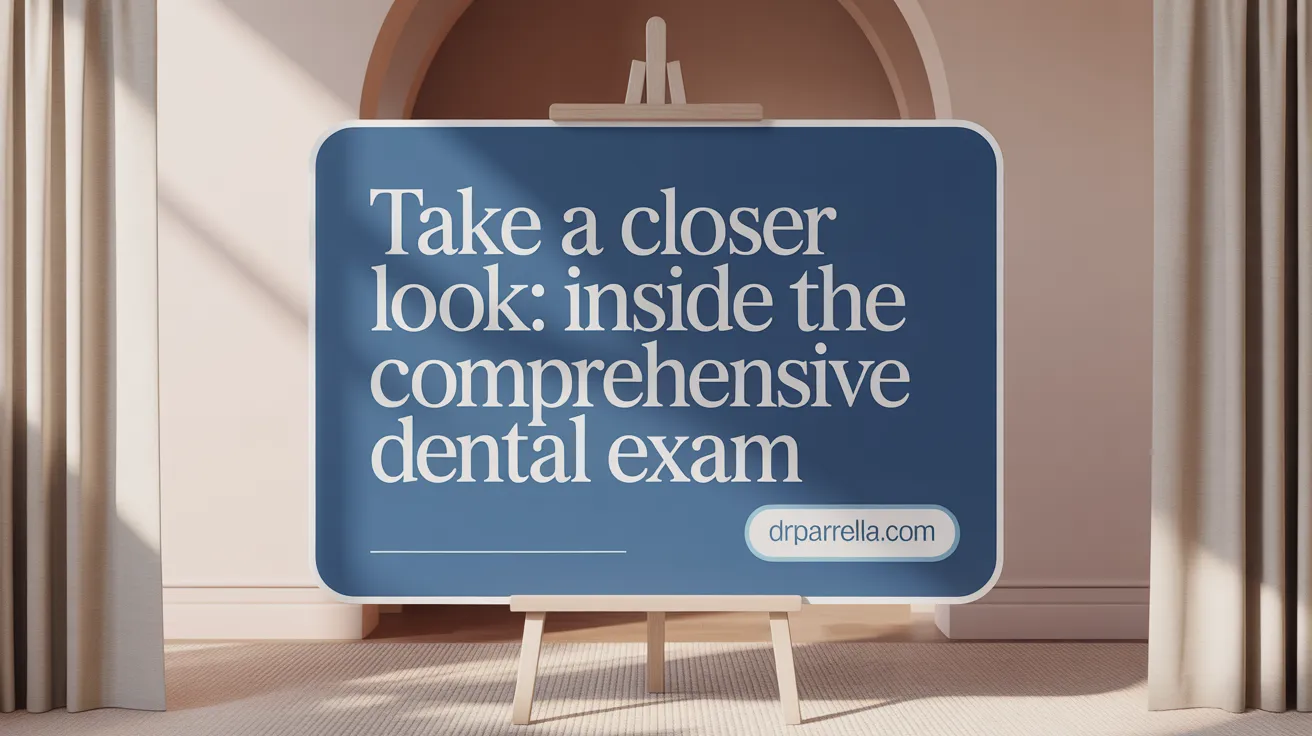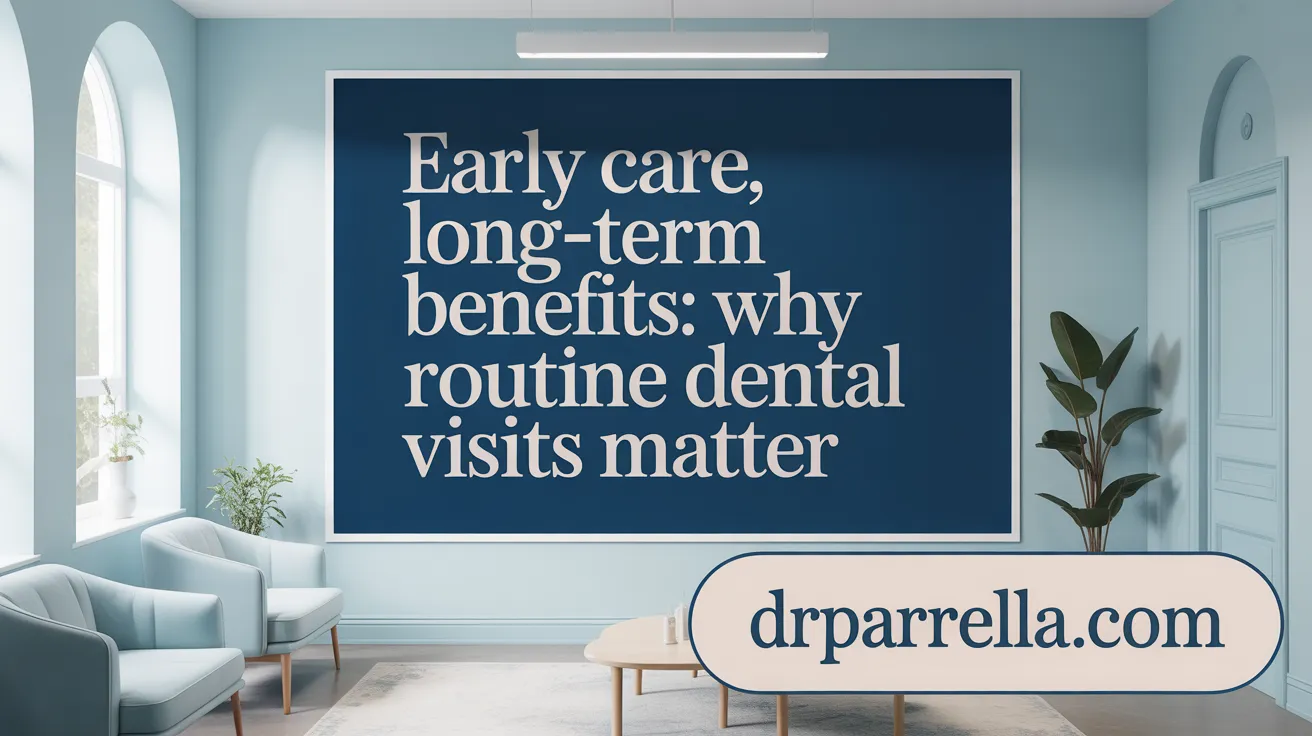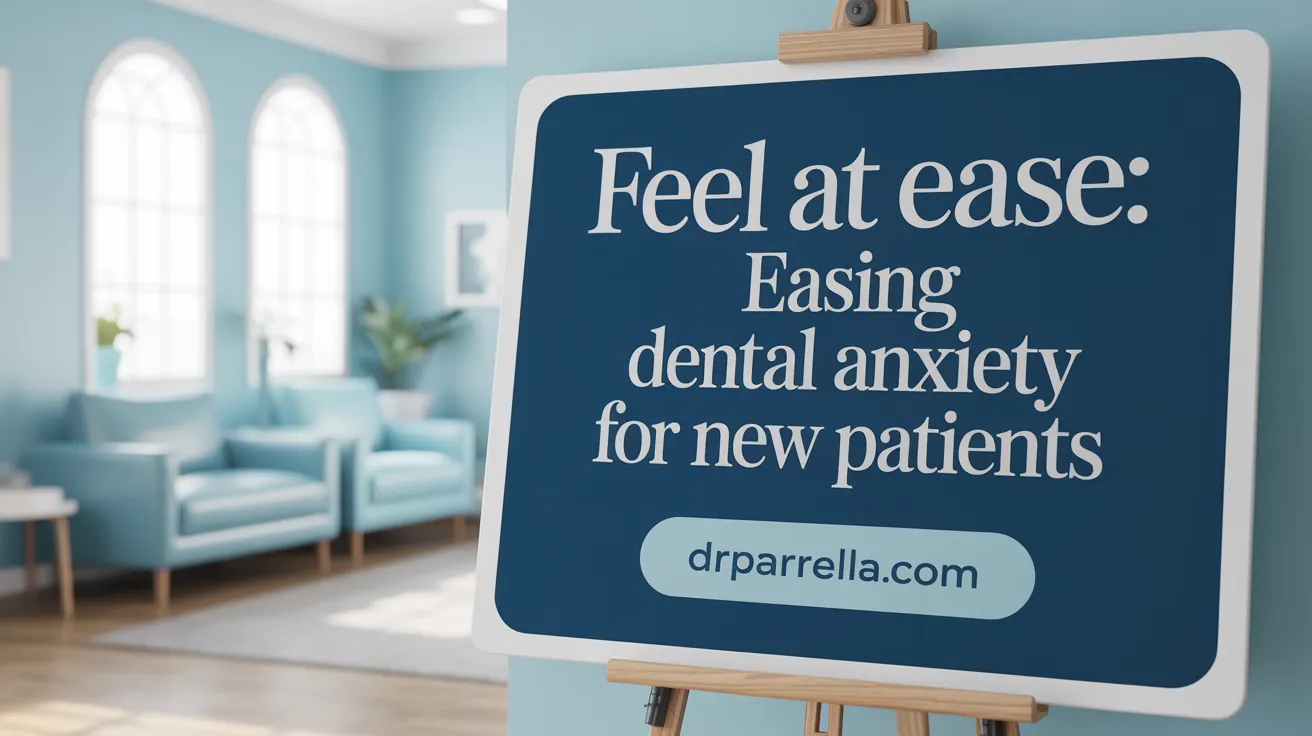Welcoming You to a Positive Dental Experience
Starting dental care or returning after a long gap can bring questions and uncertainty. This guide is designed to walk first-time dental patients through what to expect, how to prepare, and the importance of that initial visit — aiming to make your experience comfortable, informative, and reassuring.
What Happens During Your First Dental Visit?
Check-in process with Patient Coordinator
Upon arrival at the dental office, patients are greeted warmly by a Patient Coordinator. This team member handles the check-in process, verifies insurance details, and assists with completing any necessary paperwork. This initial step ensures that all administrative details are settled before the clinical part of the visit begins.
Completion of paperwork and insurance verification
Patients should arrive early to fill out new patient forms, which include their medical and dental history. Providing accurate insurance information helps streamline billing and appointment scheduling. The coordinator reviews these documents and confirms insurance coverage to prevent surprises after treatment.
Initial hygiene assessment by dental assistant or hygienist
A dental assistant or hygienist may review the completed paperwork, discuss any concerns, and perform a preliminary hygiene assessment. This includes examining the health of gums, checking for plaque or tartar buildup, and assessing overall oral hygiene status.
Digital X-rays and oral cancer screening
A crucial part of the first visit involves taking digital X-rays of the mouth. These images help detect issues like cavities, jawbone problems, or early signs of disease that are not visible to the naked eye. Additionally, an oral cancer screening is conducted, which involves examining the jaw, neck, tongue, and inside the mouth, recommended annually for early detection.
Comprehensive examination by the dentist
Following the assessments, the dentist conducts a thorough exam of the teeth, gums, bite, and surrounding tissues. This includes checking for tooth decay, gum disease, structural issues, and screening for oral cancer. The dentist may also review X-ray images during this exam.
Discussion of findings and treatment planning
After completing the exam, the dentist discusses the findings with the patient. They review the current oral health status, identify any problems, and recommend treatments if necessary. A personalized treatment plan is developed, which may include fillings, cleanings, or other procedures. Preventive advice and oral hygiene tips are also provided.
Scheduling follow-up visits
At the end of the appointment, the staff helps schedule follow-up visits needed for routine cleanings or further treatments. Patients are encouraged to ask questions about their care plan, upcoming procedures, and maintaining oral health at home. Reminders for future appointments are often sent via email or text to support ongoing dental health care.
Preparing for Your Initial Dental Appointment: Tips for New Patients

How can first-time dental patients prepare for their initial dental appointment?
Preparing for your first dental visit can help ensure a smooth experience and promote early oral health detection. First, complete all the necessary new patient forms beforehand. These forms typically include your medical and dental history, which help the dental team personalize your care.
Bring your dental insurance information and any relevant medical documents to avoid delays during check-in. It’s also advisable to confirm your appointment a day or two before and aim to arrive early. This extra time allows you to settle in comfortably and fill out any remaining paperwork.
Prepare a list of questions or concerns you might have about your dental health. Writing them down in advance can help you remember to discuss important topics during your appointment.
To reduce anxiety, try relaxing techniques such as deep breathing or listening to calming music. If you’re nervous, let the dental team know—they are experienced in managing dental anxiety and can offer support like sedation options or breaks.
For families bringing children, early scheduling in the day helps set a positive tone. Explaining what will happen in simple terms and bringing a comforting item, such as a blanket or toy, can make the experience less intimidating. Role-playing dental visits at home can also prepare children psychologically.
Overall, thorough preparation, clear communication, and a calm mindset can turn your first dental visit into a positive step towards maintaining oral health. Being open about your concerns and questions creates a partnership with your dental team, ensuring personalized and effective care.
Inside the Comprehensive Dental Exam: Step-by-Step

What steps are involved in a comprehensive dental exam for new patients?
A new patient's initial dental assessment is a detailed process that covers multiple aspects of oral health to ensure thorough care. It begins with reviewing the patient's medical and dental histories to identify any health conditions, medications, or previous dental issues that could influence treatment plans.
The dentist then conducts a comprehensive intraoral and extraoral examination. Inside the mouth, they inspect each tooth for decay, damage, or previous restorations like crowns or fillings. They also evaluate soft tissues, looking for signs of oral cancer or other abnormalities.
A periodontal (gum) health check is performed by measuring gum pockets with a periodontal probe. This helps assess the presence and severity of gum disease, checking for redness, swelling, bleeding, or recession.
The dentist examines the bite and jaw alignment, including assessing the temporomandibular joint (TMJ) function. Bite analysis and visual assessments help detect issues that could cause discomfort or functional problems.
Advanced diagnostic tools such as digital X-rays are used to visualize areas not visible to the naked eye, revealing decay, bone loss, infections, or impacted teeth. Intraoral cameras provide high-resolution images to examine tooth surfaces and other oral structures closely.
An oral cancer screening involves examining the jaw, neck, tongue, and inside the mouth for any suspicious lesions or abnormalities.
Finally, the dentist discusses findings with the patient and develops a personalized treatment or prevention plan. This plan considers individual needs, preventive strategies, and possible treatments to maintain or improve oral health.
The entire process ensures a comprehensive understanding of dental health, allowing for early detection of issues and tailored care strategies.
Typical Procedures and Treatments During the New Patient Visit
What procedures are typically involved in a new patient dental appointment?
A new patient dental appointment is a comprehensive process designed to evaluate your oral health thoroughly. It begins with paperwork, where you'll provide details about your medical history, dental concerns, and insurance information. This step allows the dental team to personalize your care and ensure safety.
Once you arrive, a dental hygienist or assistant reviews your paperwork, discusses your dental history, and assesses your current oral health. They often take digital X-rays to reveal hidden issues such as decay or bone loss and perform a visual examination of your teeth and gums.
The dentist then conducts a detailed exam, checking for cavities, signs of gum disease, inflammation, and bite problems. An oral cancer screening is also performed, typically once per year. This involves examining the jaw, neck, tongue, and inside your mouth.
One of the main components of the visit is a professional cleaning. The hygienist removes plaque and tartar buildup, polishes your teeth, and may apply fluoride treatments to strengthen your enamel and help prevent decay.
If necessary, the dentist may recommend additional procedures, like deep cleaning (scaling and root planing) for gum disease or other diagnostics. They will discuss these options based on their findings.
The appointment wraps up with a review of the findings. The dentist and team will create a treatment plan suited to your needs, which could include restorative treatments like fillings, crowns, or root canals if issues are identified.
Finally, follow-up appointments are scheduled for treatments or routine cleanings, and you’ll receive guidance on maintaining your oral health at home. If needed, anesthesia options or pain management methods are explained to ensure your comfort during procedures.
This initial visit sets the foundation for maintaining your dental health and building a trusting relationship with your dental provider.
Post-Visit Care and Maintaining Ongoing Oral Health
What post-visit care and follow-up information should new dental patients be aware of?
After a dental appointment, it is essential for patients to follow the specific instructions given by their dentist. These personalized care tips may include proper brushing and flossing techniques, using prescribed or recommended dental products, and avoiding certain foods or habits until healing is complete.
Scheduling regular check-ups and cleanings—typically every six months or as advised—is vital to maintaining oral health. Regular visits allow the dentist to monitor progress, catch early signs of issues, and implement preventive measures.
Patients should also be aware of signs that warrant immediate attention, such as persistent pain, swelling, bleeding, or any unusual symptoms following treatment. Promptly contacting the dental office ensures proper management of complications or concerns.
Effective communication is crucial. Many dental practices call or send reminders before scheduled appointments, which helps patients stay on track with their ongoing oral health routine.
Long-term dental health depends on consistent at-home habits like brushing twice daily with fluoride toothpaste, daily flossing, and using mouthwash if recommended. These routines, alongside professional care, help prevent decay, gum disease, and other oral health problems.
The dental team often provides written follow-up instructions. Patients are encouraged to ask questions, clarify doubts, and share concerns, fostering a comfortable, informed experience. Establishing a good relationship with the dental office promotes better adherence to treatment and maintenance plans.
The Importance and Benefits of Regular Dental Visits from the Start
 Regular dental check-ups play a vital role in maintaining good oral health and preventing serious dental issues. For new patients, the initial appointment is not only about addressing immediate concerns but also about establishing a foundation for long-term care.
Regular dental check-ups play a vital role in maintaining good oral health and preventing serious dental issues. For new patients, the initial appointment is not only about addressing immediate concerns but also about establishing a foundation for long-term care.
One of the main purposes of early dental visits is to detect oral diseases like cavities, gum issues, and oral cancer at their earliest stage. Through digital X-rays, comprehensive examinations, and screenings, dentists can identify problems before they become painful or require more invasive procedures.
The first appointment typically includes a thorough exam, a review of health and dental history, and a professional cleaning. This helps remove plaque and tartar buildup and assesses gum health. Discussing personalized oral hygiene routines ensures patients are equipped to maintain their health at home.
Building a trustful relationship with your dentist encourages open communication. Patients can ask questions, express concerns, and learn about preventive measures. This ongoing dialogue makes it easier to manage individual risks—whether related to cavities, gum disease, or other conditions.
Furthermore, regular preventive visits offer financial benefits. Catching dental issues early reduces the need for extensive and costly treatments, saving money in the long run. These visits also promote overall health, as oral health is linked to conditions like diabetes and heart disease.
Most dental offices recommend visiting at least twice a year. Routine appointments involve professional cleanings, oral cancer screenings, and assessments—crucial for early intervention and maintaining a healthy smile.
Ultimately, regular dental care supports a confident smile and better quality of life. By making dental visits a priority from the start, patients set themselves up for healthier teeth and gums, fewer emergencies, and ongoing support for their dental health journey.
| Aspect | What It Includes | Benefits |
|---|---|---|
| Early Detection | X-rays, examinations for decay, gum health, oral cancer | Prevents serious issues, less invasive treatments |
| Professional Cleanings | Removal of plaque, tartar, surface stains | Keeps teeth and gums healthy, freshens breath |
| Patient Education | Oral hygiene practices, personalized care advice | Empowers patients for better at-home care |
| Building Trust | Open communication with dentist and team | Confidence in care and treatment decisions |
| Cost Savings | Prevention reduces need for extensive procedures | Economical and reduces health risks |
| Overall Health Connection | Monitoring and managing risks linked to systemic health | Promotes total well-being |
Maintaining regular dental visits from the start ensures that oral health issues are addressed early, promoting a healthier, brighter smile now and in the future.
Creating Comfort and Confidence: Easing Anxiety for New Patients
 Visiting the dentist for the first time can be intimidating for many new patients, especially those with dental fears or anxiety. Common fears include worry about pain, the sound of dental tools, or feeling out of control during procedures.
Visiting the dentist for the first time can be intimidating for many new patients, especially those with dental fears or anxiety. Common fears include worry about pain, the sound of dental tools, or feeling out of control during procedures.
To help new patients feel more reassured, dental offices often implement techniques that foster a calm and supportive environment. Gentle communication, clear explanations of each step, and listening to patient concerns are essential. Dental teams are trained to create a welcoming atmosphere by speaking softly, offering comforting words, and setting expectations.
Additional options such as sedation dentistry are available for anxious patients. Sedation can range from mild relaxation techniques like nitrous oxide (
Starting a Journey Toward Lifelong Oral Health
Your first dental visit is more than just an appointment—it’s the cornerstone of your oral health journey. By understanding what to expect, preparing thoughtfully, and embracing regular care, you empower yourself to maintain a healthy, confident smile. Remember that your dental team is there to support you at every step, ensuring your experience is comfortable and personalized. With early preventive care and open communication, your visits can lead to improved well-being and peace of mind for years to come.
References
- What To Expect At Your First Dental Appointment
- Your First Dental Visit: A Comprehensive Guide for New ...
- What to Expect at a Dentist Visit for an Adult
- What to Expect at Your First Dental Visit: A New Patient's ...
- Your First Dental Visit with Dental Care Associates in PA
- What to Expect During a New Patient Comprehensive Exam
- What To Expect At Your First General Dentistry Appointment
- What New Patients Should Expect On First Dental Visit
- What to Expect When You Haven't Been to the Dentist in ...
